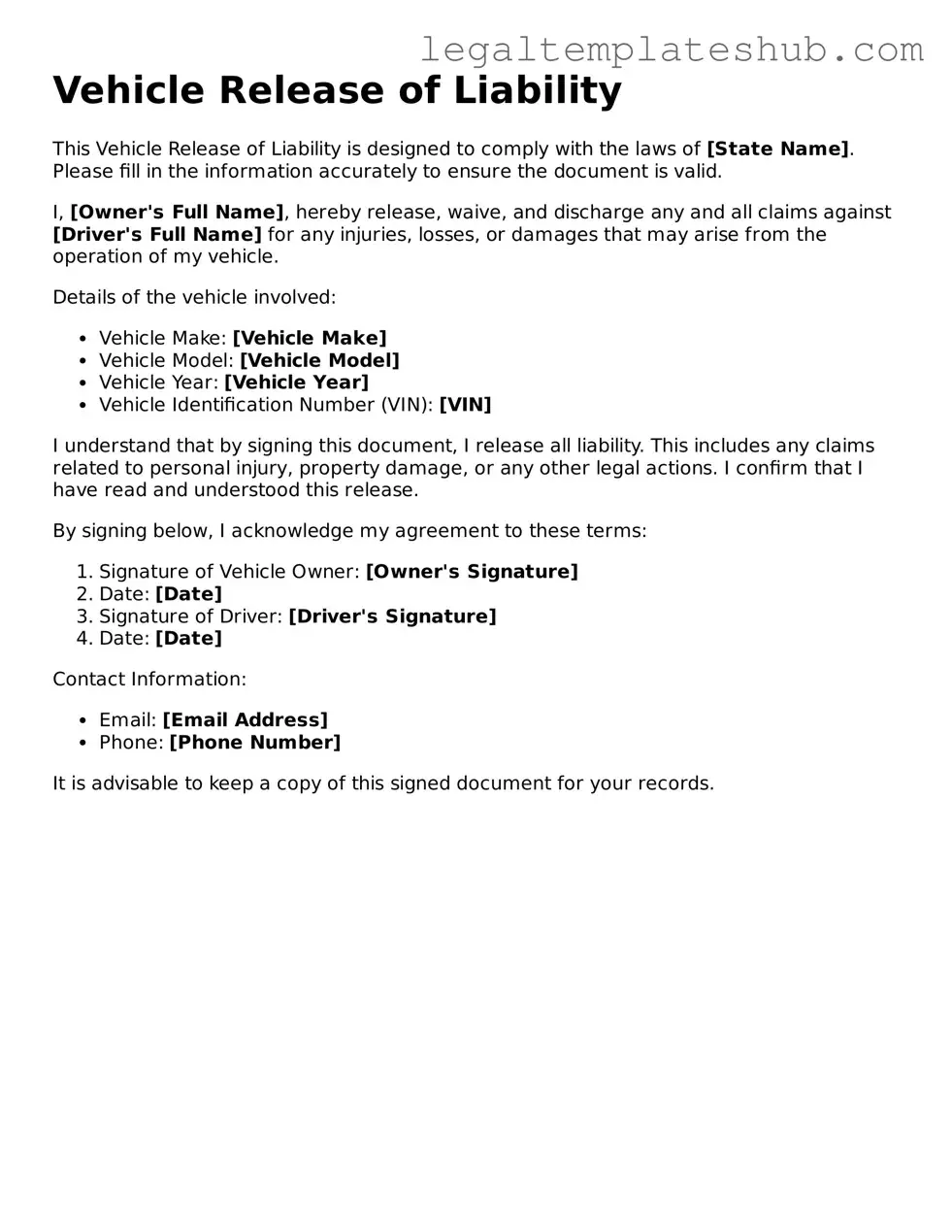Printable Vehicle Release of Liability Template
The Vehicle Release of Liability form is a legal document that protects vehicle owners from claims or lawsuits resulting from accidents or damages that occur after they have transferred ownership of their vehicle. By signing this form, the seller releases themselves from any responsibility once the vehicle is no longer in their possession. To ensure your interests are safeguarded, fill out the form by clicking the button below.
Access Editor
